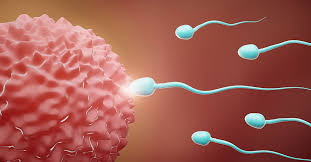A low sperm count refers to a condition in which the number of sperm present in the semen the fluid that is ejaculated from the penis during orgasm is below the normal range. This condition is medically known as oligospermia. In more severe cases, where there is a complete absence of sperm in the semen, the condition is referred to as azoospermia. According to medical guidelines, a sperm count is considered lower than normal when it falls below 15 million sperm per milliliter of semen. Having a low sperm count can affect a man’s fertility and may make it more difficult to conceive a child.
Low sperm count, medically referred to as oligospermia, is one of the leading contributors to male infertility. This condition is diagnosed when the number of sperm present in each milliliter (mL) of semen falls below a specific threshold; fewer than 15 million sperm per mL is considered lower than normal. For comparison, the typical sperm concentration in healthy individuals averages around 39 million sperm per mL, though this figure can vary significantly from person to person due to a range of biological and external factors.
A number of risk factors may increase the likelihood of developing a low sperm count. These include being overweight or obese, having a history of injury, trauma, or surgical procedures involving the testicles, and the use of certain prescription or recreational drugs that may affect hormone levels or sperm production.
In general, the underlying causes of low sperm count and reduced sperm quality can be grouped into three broad categories: Medical, environmental and lifestyle.
Medical: Certain health conditions can contribute to the health of sperm leading to low sperm count and they include:
Varicocele: refers to an abnormal enlargement or swelling of the veins located within the scrotum, specifically the veins that are responsible for draining blood from the testicles. This condition is relatively common, particularly among adolescent and adult males, and it often develops during puberty. In many cases, a varicocele is harmless and may not cause any noticeable symptoms. However, in some individuals, it can lead to complications, particularly related to reproductive health.
One of the most significant concerns associated with varicoceles is their link to male infertility. Research has shown that the presence of a varicocele can negatively affect various aspects of sperm production and function. Specifically, it can contribute to a reduced sperm count, decreased sperm motility (the ability of sperm to move effectively), and abnormal sperm morphology (shape and structure). These changes can lower the chances of natural conception .
Infection: Certain infections can negatively affect sperm health or disrupt the body’s ability to produce sperm. Repeated infections may cause scarring that blocks sperm from passing through the reproductive tract. Sexually transmitted infections like gonorrhea and HIV are known to reduce sperm count and fertility.
Infections from viruses, bacteria, or fungi can cause inflammation of the testicles (orchitis) or the epididymis, the tube where sperm mature and are stored. While most infections improve without long-term effects, some can cause lasting damage to the testicles and impair fertility. When damage occurs, fertility specialists may still be able to retrieve sperm directly from the testicles as part of assisted reproductive treatments, offering hope for men affected by infection-related infertility.
Ejaculation Problems: Ejaculation is the process of releasing semen from the penis, typically during orgasm. In some cases, semen may flow backward into the bladder instead of exiting through the penis this is known as retrograde ejaculation. Certain medical conditions, such as diabetes and spinal cord injuries, as well as surgeries involving the bladder, prostate, or urethra, can lead to retrograde ejaculation or a complete absence of ejaculation.
Some medications, particularly alpha blockers used to treat high blood pressure, may also interfere with ejaculation. While some of these issues can be treated, others may be permanent. However, even when ejaculation is impaired, sperm can often still be retrieved directly from the testicles and used in fertility treatments.
Tumors: Both cancerous and noncancerous tumors can impact male fertility by directly affecting the reproductive organs or by interfering with hormone-producing glands like the pituitary gland, which plays a key role in regulating reproduction. In addition, treatments for tumors such as surgery, radiation therapy, or chemotherapy, even when aimed at other parts of the body, can also harm the body’s ability to produce sperm.
Previous Surgeries: Some past surgeries can lead to the absence of sperm in the semen by blocking the normal pathways sperm travel through. These include procedures such as vasectomy, inguinal hernia repair, surgeries on the scrotum or testicles, prostate surgeries, and major abdominal operations for conditions like testicular or rectal cancer. In many cases, surgery can be performed to remove these blockages. Alternatively, sperm can often be collected directly from the testicles or the epididymis, the small coiled tube where sperm matures, for use in fertility treatments.
Hormonal Imbalances: Sperm production relies on a delicate balance of hormones produced by several parts of the body. The hypothalamus and pituitary gland in the brain release hormones that signal the testicles to produce sperm. The testicles themselves also produce hormones essential for this process. When the levels of these hormones are disrupted, it can interfere with the body’s ability to make sperm. Additionally, imbalances in hormones from the thyroid or adrenal glands can also negatively impact sperm count.
Environment: Sperm count and function can decline due to excessive exposure to certain harmful elements:
Industrial chemicals: Prolonged contact with substances like pesticides, insecticides, and organic solvents may contribute to reduced sperm production.


